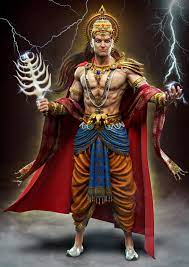


King of the Gods, Devaraja Indra is also known as Swargapati (the Lord of Heaven), Vajrapani (who has thunderbolt in his hand), Surendra (Chief of deities), Vasava (Lord of Vasus), Meghavahana (Rider of the clouds), Devendra (Lord of deities). In Vedic religion, Lord Indra used to be an important God who became a major worshipable figure in Hinduism and Buddhism. The King of the Gods, Indra Dev is generally depicted as a benevolent God who is generous to his worshippers since he delivers beneficial rainstorms and ends droughts thereby, providing prosperity to mankind. Ages later, Devaraja Indra was transformed merely as a mythological figure from a worshipped God.
Indralok- the abode of Indra is a dream abode which every devotee wishes to attain after death. Seekers believe heaven is a happy abode attaining which souls will get liberated and enjoy the luxurious life the same as the King of Heaven relishes.
In the post-Vedic era, however, Indra lost much of his prominence. Though still hailed as a mighty ruler, he started to be portrayed as an egoistic, drunken, hedonistic and adulterous being, who often comes into the limelight for all the wrong reasons.
Though a very ancient deity, Indra's exact origins are not clear. Interestingly, he has often been associated with Thor of Nordic and Germanic mythologies. Both carry weapons and have control over lightning and thunder; both their weapons return to their respective owners after their use; both are associated with bulls at an earlier time in their lives; and both are heroes and protectors of mankind.
Historical facts indicate that Indira held a prominent place in northeastern Asia minor. Inscriptions on the Boghaz-koi clay tablets in Turkey, dated about 1400 BC, make mention of the deity. Evidence of Indra's existence is also found in Avestan pantheon. But here, he is considered to be a demon. These facts suggest that he was worshipped even back then.
According to the Rigveda (around 1700-1100 BC), Indra was considered as the highest God and the Supreme Being. He is referred to as Vritrahan, or literally, "the slayer of the demon Vritra".
Though a very ancient deity, Indra's exact origins are not clear. Interestingly, he has often been associated with Thor of Nordic and Germanic mythologies. Both carry weapons and have control over lightning and thunder; both their weapons return to their respective owners after their use; both are associated with bulls at an earlier time in their lives; and both are heroes and protectors of mankind.
Historical facts indicate that Indira held a prominent place in northeastern Asia minor. Inscriptions on the Boghaz-koi clay tablets in Turkey, dated about 1400 BC, make mention of the deity. Evidence of Indra's existence is also found in Avestan pantheon. But here, he is considered to be a demon. These facts suggest that he was worshipped even back then.
According to the Rigveda (around 1700-1100 BC), Indra was considered as the highest God and the Supreme Being. He is referred to as Vritrahan, or literally, "the slayer of the demon Vritra".


Hinduism is a religion that is alive for thousands of years. It is such a tradition that was born in the Indian subcontinent and shaped the Indian culture. Hinduism is not only a religion but also an integral identity of the majority of Indians.
Read more